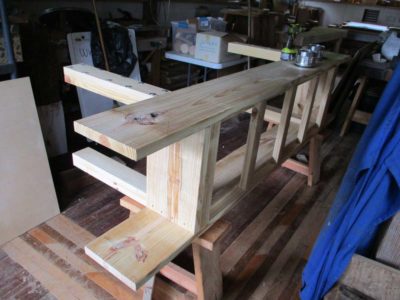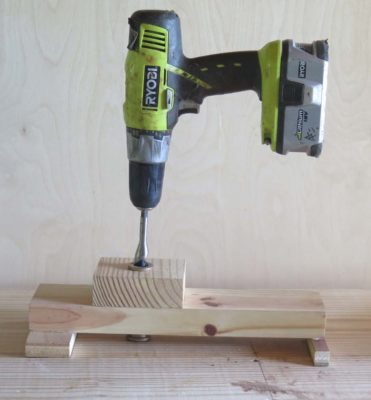Workbench Wednesday – #17 (2018) Full Size Nicholson
For our penultimate offering in the “looking back” portion of this series I offer for your consideration a full-size Nicholson. This workbench was primarily an exercise in, “I wonder…” as in, “I wonder how fast I can build a complete basic bench.” This approach to seeing how much time it would take to build the basic workbench was predicated on leaving the full tricking out for a subsequent session. I found the answer to be about 4 hours, not counting the time for obtaining the lumber from over the mountains.
Notwithstanding my deep connection to Roubo benches I have come to see the Nicholson as a preferable option for many woodworkers. It is exceedingly fast and easy to build, needing only a small table saw (or even a hand-held circular saw with a Speed Square for crosscutting and a rip fence on the saw base) , battery drill with a box of decking screws, and hand saw and hand plane of your choosing to make.

As (almost) always I began with clear southern yellow pine 2x12x24′ construction lumber selected from the inventory of Virginia Frame in Fishersville VA. They gladly cut the 24-footers into 8-foot sections for me. Once home I ripped then crosscut two of the boards in half for stock to fabricate the legs and the cross battens for the top boards to rest on.

The assembly itself was so straightforward I need not even discuss it in any detail. With my drill, framing square and the decking screws it was up on its feet in no time. I made the bench with a double apron on the front side in order to provide 3″ of thickness for holdfast holes. I dimensioned the backing apron to be at the right height for the battens, and the off cut served as the support for the battens on the rear apron. The double thickness of battens and top boards serves the same function of capturing the holdfasts.

With my 3/4″ hole drilling jig I can go back and put holes whenever and wherever I need them. But for now it was just a basic, fully functional full-sized (8-foot) workbench that could last several generations of craftsmen.
All the “tricking out” features would come on the final bench of this part of the series, #18, Bob’s bench for gunsmithing.
(Truth in advertising — when I ramped up the production of Mel’s Wax over in my work space I purloined this workbench from the classroom, and last week I build another one to take its place. So maybe this posting is about Opus 17 and Opus 19.)


Join the Conversation!